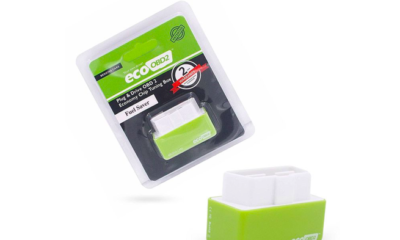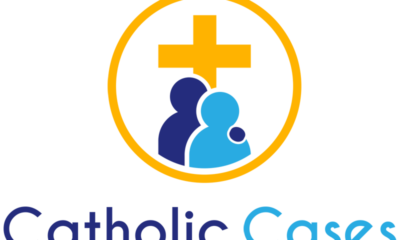Business
Recession-Proof Medical Practice Marketing

What’s the difference between a recession and a depression? In a recession, your competitors close their doors. In a depression, you close yours. As physicians across the country increasingly worry about their economic and financial future, the specter of the largest recession in decades or possibly a depression looms large. For medical practices, the stakes are particularly high as patients delay elective procedures, and even ongoing wellness care or chronic disease treatment.
The question that looms large for many practice owners is: how do you prepare for an uncertain financial future?
When preparing for an economic downturn, it is important to understand the difference between Practice Marketing Resistance and Resilience. Marketing Resistance is the ability of a practice to withstand a disturbance in revenue flow by putting in place marketing processes that make it possible to return to normal operations with minimal disruption. Marketing Resilience, on the other hand, is the ability of a practice to recover after suffering great harm from a serious revenue disturbance and continue to operate in a devolving situation.
This article is developed using insights from Peter J. Polack, MD, a practicing ophthalmologist who specializes in laser refractive and cataract surgery. Additionally, he is the founder of Emedikon, a venture marketing firm that leverages his proprietary Practice Domination Marketing Protocol to help medical practices improve their marketing strategies. With a family background in ophthalmology, Peter has witnessed firsthand the changes affecting healthcare practices and delivery. For many years, he has been fascinated by the role of technology and marketing in the medical field.
Peter shares his insights on marketing through his blogs on Healio Ophthalmology and Eyes on Eyecare. He is also a prominent contributor to Quora.com, an expert platform where his posts have garnered over 4 million views. This gives him an unprecedented insight into what patients want, which informs how he views crafting excellent patient experiences, which we all know is the coin of the realm.
The good news, he reveals, is that in an economic downturn Marketing Resistance and Resilience programs as integral parts of your marketing efforts can be the deciding factors in whether your practice thrives, survives, or closes its doors. The key is to understand your practice’s situation and tailor your marketing accordingly. Here are three steps that can help your practice build resilience or resistance and prepare for an uncertain future.
Step 1: Marketing Triage
The first step is to perform Marketing Triage by critically evaluating every opportunity source you are currently investing in. Make sure you have a full inventory of every lead source that brings in opportunities. Are you tracking all leads that come in through the phone, email, website, or other sources? After you have built your lead sources list, assess each one’s ability to capture leads, nurture, and convert them into revenue. Are you following up with them in a timely manner and nurturing those leads through the entire patient journey? By identifying gaps in your lead capture and conversion process, you can prioritize your efforts and allocate resources to where they will have the most impact. In broad strokes, this means you will have to do a detailed performance evaluation of your traffic and funnels.
Step 2: Focus on High-Value Cash Services (for prospects who still have money)
During a recession, as we experienced in 2009, patients are more selective about the cash services they choose. This means that practices should focus on offering high-value cash services that you know will always be in demand by patients with discretionary dollars. In the marketing world, this is known as “marketing to the affluent,” a term of art first articulated by Dan Kennedy, whose book about it is on Amazon if you’re interested. By prominently marketing these services and tailoring your messaging to emphasize their value and affordability, you can maintain revenue and build a marketing list of prospects with disposable income. You can instantly promote directly and on demand to this audience (practically free) using email and SMS. The money’s in the list.
Step 3: Diversify Your Marketing Efforts
Finally, it is important to diversify your marketing efforts to reach a wider audience and maximize your exposure. This means using a mix of online and offline channels, such as social media, email marketing, search engine optimization, print advertising, and community outreach. There are only four ways to reach your audience of choice:
- Online + paid traffic – advertising on social media and various ad networks
- Online + free traffic – known as content marketing
- Offline + paid traffic – print, TV, radio, ads, billboards, local events, and sponsorships
- Offline + free traffic – referrals, word-of-mouth, waiting room signage
With a diversified marketing approach, you reach patients where they are and increase your chances of success.
In conclusion, building Marketing Resistance and Resilience requires a strategic approach that takes into account your practice’s risk tolerance levels and its unique situation and challenges. By performing marketing triage, focusing on high-value cash services, and diversifying your marketing efforts, you can prepare your practice for a recession and emerge stronger on the other side.
Business
13 Reasons Investors Are Watching Phoenix Energy’s Expansion in the Williston Basin

As energy security becomes a growing priority in the United States, companies focused on domestic oil production are gaining attention from investors. One such company is Phoenix Energy, an independent oil and gas company operating in the Williston Basin, a prolific oil-producing region spanning North Dakota and Montana.
Phoenix Energy has established itself as a key player in this sector, expanding its footprint while offering structured investment opportunities to accredited investors. Through Regulation D 506(c) corporate bonds, the company provides investment options with annual interest rates ranging from 9% to 13%.
Here are 13 reasons why Phoenix Energy is attracting investor interest in 2025:
1. U.S. energy production remains a strategic priority
The global energy landscape is evolving, with a renewed focus on domestic oil and gas production to enhance economic stability and reduce reliance on foreign energy sources. The Williston Basin, home to the Bakken and Three Forks formations, continues to play a critical role in meeting these demands. Phoenix Energy has established an operational footprint in the basin, where it is actively investing in development and production.
2. Investment opportunities with fixed annual interest rates
Phoenix Energy bonds offer accredited investors annual interest rates between 9% and 13% through Regulation D 506(c). These bonds help fund the company’s expansion in the Williston Basin, where it acquires and develops oil and gas assets.
3. Record-breaking drilling speeds in the Williston Basin
Phoenix Energy has made significant strides in drilling efficiency, ranking among the fastest drillers in the Bakken Formation as of late 2024. By reducing drilling times, the company aims to optimize operations and improve overall production performance.
4. Expansion of operational footprint
Since becoming an operator in September 2023, Phoenix Energy has grown rapidly. As of March 2025, the company has 53 wells drilled and 96 wells planned over the next 12 months.
5. Surpassing production expectations
Phoenix Energy’s oil production has steadily increased. By mid-2024, its cumulative production had exceeded 1.57 million barrels, outpacing its total output for 2023. The company projected an exit rate of nearly 20,000 barrels of oil equivalent per day by the end of March 2025.
6. High-net-worth investor offerings
For investors seeking alternative investments with higher-yield opportunities, Phoenix Energy offers the Adamantium bonds through Reg D 506(c), which provides corporate bonds with annual interest rates between 13% and 16%, with investment terms ranging from 5 to 11 years, and a minimum investment of $2 million.
7. Experienced team with industry-specific expertise
Phoenix Energy’s leadership and technical teams include professionals with decades of oil and gas experience, including backgrounds in drilling engineering, land acquisition, and reservoir analysis. This level of in-house expertise supports the company’s ability to evaluate acreage, manage operations, and execute its long-term development plans in the Williston Basin.
8. Focus on investor communication and understanding
Phoenix Energy prioritizes clear investor communication. The company hosts webinars and provides access to licensed professionals who walk investors through the business model and operations in the oil and gas sector. These efforts aim to help investors better understand how Phoenix Energy deploys capital across mineral acquisitions and operated wells.
9. Managing market risk through strategic planning
The energy sector is cyclical, and Phoenix Energy takes a structured approach to risk management. The company employs hedging strategies and asset-backed financing to help mitigate potential fluctuations in the oil market.
10. Commitment to compliance
Phoenix Energy conducts its bond offerings under the SEC’s Regulation D Rule 506(c) exemption. These offerings are made available exclusively to accredited investors and are facilitated through a registered broker-dealer to support adherence to federal securities laws. Investors can review applicable offering filings on the SEC’s EDGAR database.
11. Recognition for business practices
As of April 2025, Phoenix Energy maintains an A+ rating with the Better Business Bureau (BBB) and is a BBB-accredited business. The company has also earned strong ratings on investor review platforms such as Trustpilot and Google Reviews, where investors often highlight clear communication and transparency.
12. A family-founded business with a long-term vision
Led by CEO Adam Ferrari, Phoenix Energy operates as a family-founded business with a focus on long-term investment strategies. The company’s leadership emphasizes responsible growth and sustainable development in the Williston Basin.
13. Positioned for long-term growth in the oil sector
With U.S. energy demand projected to remain strong, Phoenix Energy is strategically positioned for continued expansion. The company’s focus on efficient drilling, financial discipline, and structured investment offerings aligns with its goal of building a resilient and growth-oriented business.
Final thoughts
For investors looking to gain exposure to the U.S. oil and gas sector, Phoenix Energy presents an opportunity to participate in a structured alternative investment backed by the company’s operational expansion in the Williston Basin.
Accredited investors interested in learning more can attend one of Phoenix Energy’s investor webinars, which are hosted daily throughout the week. These sessions provide insights into market trends, risk management strategies, and investment opportunities.
For more information, visit the Phoenix Energy website.
Phoenix Capital Group Holdings, LLC is now Phoenix Energy One, LLC, doing business as Phoenix Energy. The testimonials on review sites may not be representative of other investors not listed on the sites. The testimonials are no guarantee of future performance or success of the Company or a return on investment. Alternative investments are speculative, illiquid, and you may lose some or all of your investment. Securities are offered by Dalmore Group member FINRA/SIPC. Dalmore Group and Phoenix Energy are not affiliated. See full disclosures.
This article contains forward-looking statements based on our current expectations, assumptions, and beliefs about future events and market conditions. These statements, identifiable by terms such as “anticipate,” “believe,” “intend,” “may,” “expect,” “plan,” “should,” and similar expressions, involve risks and uncertainties that could cause actual results to differ materially. Factors that may impact these outcomes include changes in market conditions, regulatory developments, operational performance, and other risks described in our filings with the U.S. Securities and Exchange Commission. Forward-looking statements are not guarantees of future performance, and Phoenix Energy undertakes no obligation to update them except as required by law.
-

 Tech4 years ago
Tech4 years agoEffuel Reviews (2021) – Effuel ECO OBD2 Saves Fuel, and Reduce Gas Cost? Effuel Customer Reviews
-

 Tech6 years ago
Tech6 years agoBosch Power Tools India Launches ‘Cordless Matlab Bosch’ Campaign to Demonstrate the Power of Cordless
-

 Lifestyle6 years ago
Lifestyle6 years agoCatholic Cases App brings Church’s Moral Teachings to Androids and iPhones
-

 Lifestyle4 years ago
Lifestyle4 years agoEast Side Hype x Billionaire Boys Club. Hottest New Streetwear Releases in Utah.
-

 Tech6 years ago
Tech6 years agoCloud Buyers & Investors to Profit in the Future
-

 Lifestyle5 years ago
Lifestyle5 years agoThe Midas of Cosmetic Dermatology: Dr. Simon Ourian
-

 Health6 years ago
Health6 years agoCBDistillery Review: Is it a scam?
-

 Entertainment6 years ago
Entertainment6 years agoAvengers Endgame now Available on 123Movies for Download & Streaming for Free
